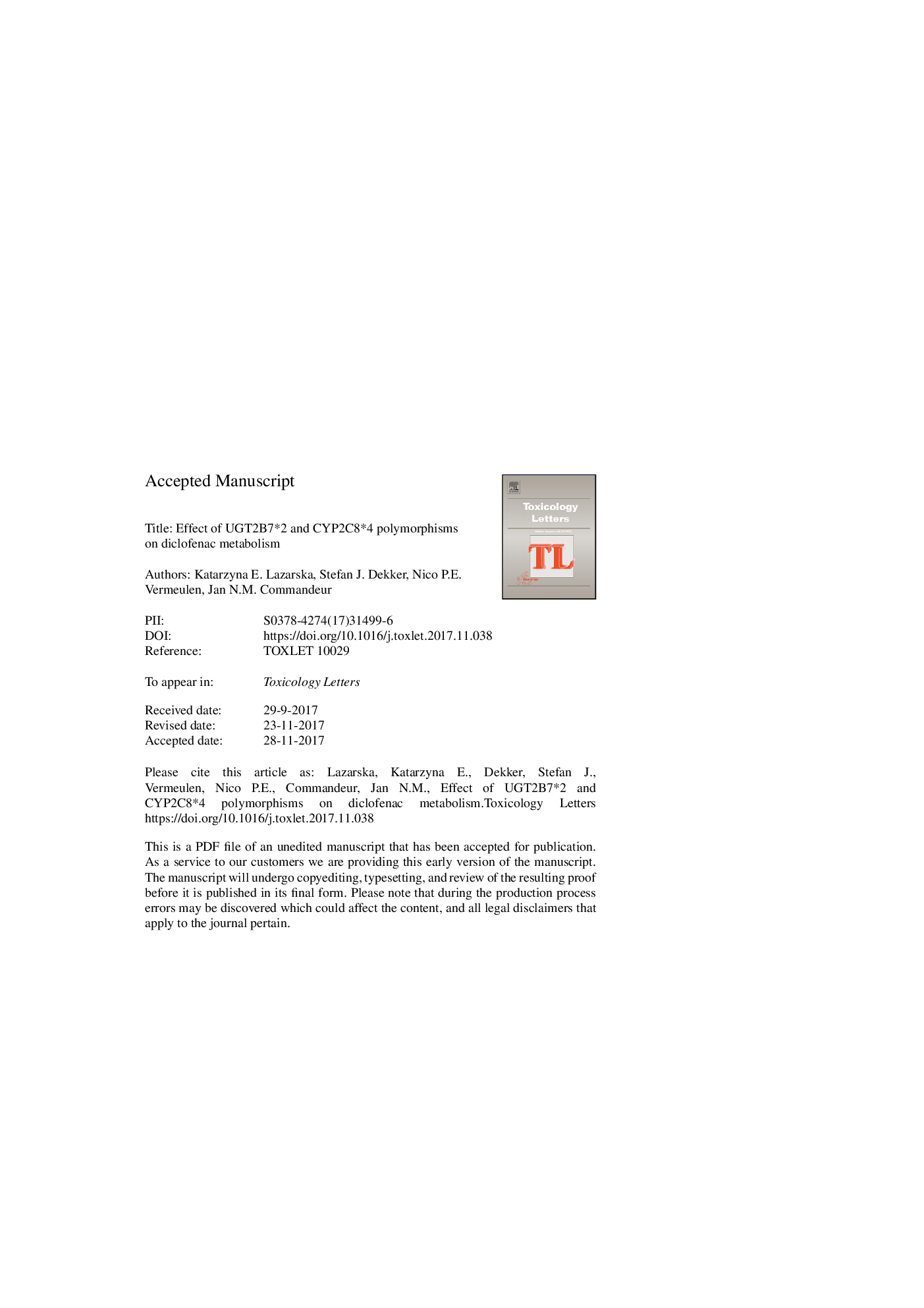| Article ID | Journal | Published Year | Pages | File Type |
|---|---|---|---|---|
| 8553463 | Toxicology Letters | 2018 | 27 Pages |
Abstract
The use of diclofenac is associated with rare but severe drug-induced liver injury (DILI) in a very small number of patients. The factors which predispose susceptible patients to hepatotoxicity of diclofenac are still incompletely understood. Formation of protein-reactive metabolites by UDP-glucuronosyl transferases and cytochromes P450 is commonly considered to play an important role, as indicated by the detection of covalent protein adducts and antibodies in the serum of patients suffering from diclofenac-induced liver injury. Since no associations have been found with HLA-alleles, polymorphisms of genes encoding for proteins involved in the disposition of diclofenac may be important. Previous association studies showed that possession of the UGT2B7*2 and CYP2C8*4 alleles is more common in cases of diclofenac-induced DILI. In the present study, the metabolism of diclofenac by UGT2B7*2 and CYP2C8*4 was compared with their corresponding wild-type enzymes. Enzyme kinetic analysis revealed that recombinant UGT2B7*2 showed an almost 6-fold lower intrinsic clearance of diclofenac glucuronidation compared to UGT2B7*1. The mutant CYP2C8*4 showed approximately 35% reduced activity in the 4â²-hydroxylation of diclofenac acyl glucuronide. Therefore, a decreased hepatic exposure to diclofenac acyl glucuronide is expected in patients with the UGT2B7*2 genotype. The increased risk for hepatotoxicity, therefore, might be the result from a shift to oxidative bioactivation to cytotoxic quinoneimines.
Keywords
Acyl glucuronidesESINADPH quinone oxidoreductaseCyPNSAIDUGTGSTNQO1TOFHLMNADPH cytochrome P450 reductaseUDP-glucuronosyltransferaseDrug-induced liver injuryHuman leukocyte antigenHLANon-steroidal antiinflammatory drugDILIDiclofenactime of flightCytochrome P450BioactivationGenome-wide association studyGWASHuman Liver MicrosomesGenetic polymorphismglutathione S-transferaseelectrospray ionization
Related Topics
Life Sciences
Environmental Science
Health, Toxicology and Mutagenesis
Authors
Katarzyna E. Lazarska, Stefan J. Dekker, Nico P.E. Vermeulen, Jan N.M. Commandeur,
